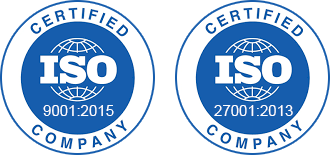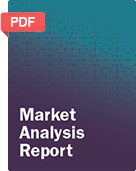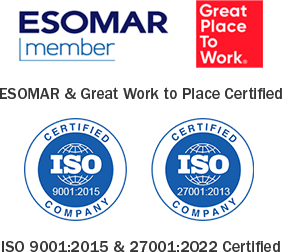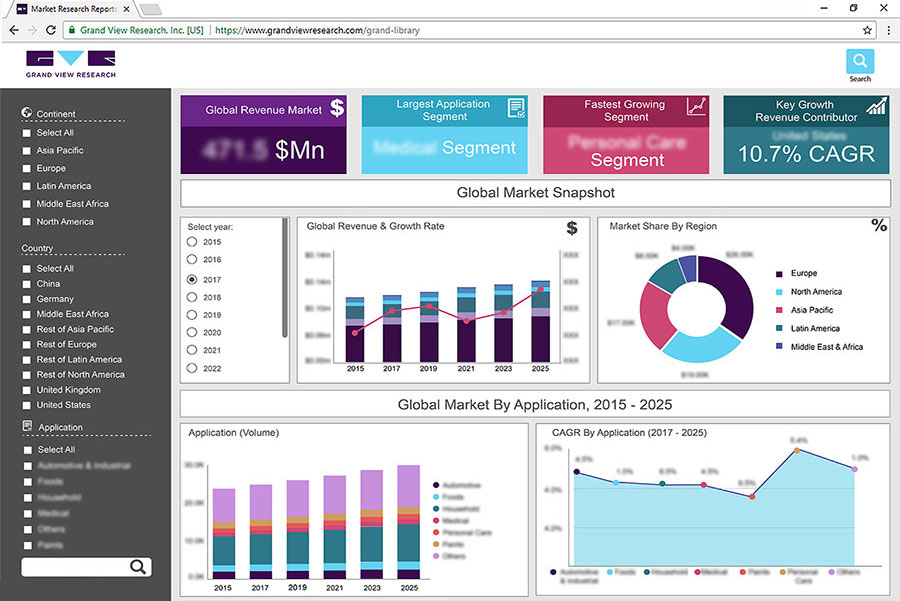- Home
- »
- Consumer F&B
- »
-
Premium Chocolate Market Size, Industry Report, 2030GVR Report cover
![Premium Chocolate Market Size, Share & Trends Report]()
Premium Chocolate Market Size, Share & Trends Analysis Report By Product (Dark Chocolate, White Chocolate), By Type (Chocolate Bars, Assortments), By Distribution Channel, By Region, And Segment Forecasts, 2025 - 2030
- Report ID: GVR-4-68039-964-4
- Number of Report Pages: 100
- Format: PDF, Horizon Databook
- Historical Range: 2018 - 2024
- Forecast Period: 2025 - 2030
- Industry: Consumer Goods
Premium Chocolate Market Size & Trends
The global premium chocolate market size was estimated at USD 31.87 billion in 2024 and is projected to grow at a CAGR of 4.3% from 2025 to 2030. The major factor propelling the growth of premium product ranges is continuous innovation by manufacturers among products, which pushes the envelope toward various new flavors to attract consumers. Moreover, leading companies are adding a touch of "comfort foods" into their premium ranges, namely, bacon, cereal, or cookie dough. In addition, the incorporation of various flavors in these products, such as a hint of gourmet salt and alcohol, also acts as a booster for the growth of the global market.

The demand for premium chocolates is rising due to several key factors, many of which reflect shifting consumer preferences towards higher quality, ethical production, and indulgence. One of the main drivers of this growth is the broader trend of premiumization in food and beverages. Consumers are increasingly willing to pay more for products that offer superior ingredients, artisanal craftsmanship, and unique flavors. Premium chocolates, often made with high-quality cocoa, organic ingredients, and innovative recipes, align with this desire for a more sophisticated and indulgent product experience. This shift toward premium products is also fueled by the growing appreciation for luxury and experiential consumption, where consumers seek not just a product but an experience that satisfies their sensory and emotional needs.
Another significant factor contributing to the rise in demand for premium chocolates is the increasing focus on health-conscious choices. As consumers become more mindful of their diets, many are turning to dark chocolate varieties, which are rich in antioxidants, may support heart health, and are seen as a more healthful alternative to milk chocolate. Premium dark chocolate, typically containing higher cocoa percentages and lower sugar content, appeals to consumers seeking a guilt-free indulgence. In addition, many premium chocolate brands emphasize clean labels, offering products with fewer additives and preservatives, which aligns with the growing preference for natural, minimally processed foods.
Consumers are also becoming more ethically conscious about their purchases, and this has positively impacted the demand for premium chocolates. Many high-end chocolate brands focus on sustainable sourcing and fair-trade certification, ensuring that cocoa farmers are paid fairly and that environmental practices are upheld. As awareness of social and environmental issues grows, consumers are increasingly choosing premium chocolates that reflect their values. This ethical approach, coupled with transparency in sourcing and production, has become a significant selling point for many consumers who wish to make responsible purchasing decisions.
In addition to these factors, luxury gifting has become a major contributor to the rise in premium chocolate consumption. Chocolates have long been a favored gift, and in recent years, there has been a shift towards gifting high-quality artisanal products. Premium chocolates, with their elegant packaging and high-end ingredients, are seen as thoughtful, sophisticated gifts for special occasions like holidays, birthdays, or corporate events. This trend toward gifting, combined with the growing popularity of experiential and emotion-driven purchases, makes premium chocolates an attractive option for consumers looking to treat themselves or others to something indulgent.
Product Insights
Milk premium chocolate accounted for a revenue share of 46.7% in 2024. Consumers are increasingly viewing premium milk chocolate as an affordable luxury, aligning with the rising trend of indulgence in food products. Premium chocolates are perceived as both a treat and a sensory experience, and this has led to higher demand in both developed and emerging markets. Milk chocolate traditionally contains higher sugar and fat content than dark chocolate. The premium category is witnessing a shift towards “healthier” milk chocolate options. Brands are offering products with reduced sugar, organic ingredients, and free-from labels (gluten-free, non-GMO, etc.). This has been driven by the increasing consumer preference for clean-label products and guilt-free indulgence.
The dark premium chocolate segment is expected to grow at a CAGR of 4.8% from 2025 to 2030. Dark chocolate is often marketed as a healthier alternative to milk chocolate due to its higher cocoa content and lower sugar levels. Consumers are increasingly aware of its health benefits, such as being rich in antioxidants, improving heart health, and reducing stress. For instance, brands such as Lindt & Sprüngli have emphasized the health benefits of their premium dark chocolate products through their corporate communications. They have continuously introduced high-cocoa-content dark chocolates, such as their 85% and 90% cocoa bars, which cater to health-conscious consumers.
Distribution Channel Insights
Sales of premium chocolate through hypermarkets & supermarkets accounted for a revenue share of 35.9% in 2024. Hypermarkets and supermarkets offer a one-stop shopping experience, making it convenient for consumers to purchase premium chocolates alongside their regular grocery items. The accessibility of these retail channels allows consumers to easily integrate premium chocolate purchases into their routine shopping trips. Retailers like Walmart and Target have expanded their premium chocolate offerings, providing consumers with the opportunity to try new brands and flavors without needing to visit specialty stores.
Sales of premium chocolate through online stores are expected to grow at a CAGR of 7.4% from 2025 to 2030. The demand for premium chocolates through online stores is primarily driven by convenience, wider selections, and targeted marketing strategies that cater to specific consumer preferences. Retailers like Amazon and specialty online chocolate shops, such as Chococurb, have expanded their offerings to include a variety of premium brands, appealing to consumers seeking quality products that may not be available in local stores.
Type Insights
Assortment accounted for a revenue share of 35.8% in 2024 in the premium chocolate industry. Consumers increasingly seek variety in their chocolate experiences, and leading brands offer assortments featuring an array of flavors and textures. This trend enhances the appeal of premium chocolate assortments, as they cater to diverse taste preferences. Moreover, brands such as Lindt provide assorted chocolate and truffle boxes that include flavors ranging from classic dark chocolate to unique options like raspberry or hazelnut cream. This variety attracts consumers looking for a comprehensive tasting experience in one package.

Chocolate bars are expected to grow with a CAGR of 5.0% from 2025 to 2030. Consumers are becoming more discerning about the quality of ingredients used in chocolate. Premium chocolate bars often emphasize high cocoa content, organic ingredients, and natural flavorings, appealing to health-conscious and quality-focused consumers. Brands such as Green & Black are known for their organic and Fair Trade-certified chocolate bars. By highlighting the use of high-quality ingredients and sustainable sourcing, the brand attracts consumers who prioritize ethical and premium options.
Regional Insights
The North America premium chocolate market is expected to grow at a CAGR of 3.0% from 2025 to 2030. Consumers in North America are increasingly seeking high-quality, ethically sourced ingredients in their chocolate. They prioritize organic, fair-trade, and single-origin cocoa, associating these with superior taste and health benefits. For example, brands such as Lindt and Green & Black highlight their use of ethically sourced, high-percentage cocoa, appealing to conscious consumers. The preference for products without artificial additives also drives the demand for premium, cleaner-label chocolate options, thus supporting the growth of the overall industry.
U.S. Premium Chocolate Market Trends
The premium chocolate market in the U.S. is expected to grow at a CAGR of 2.9% from 2025 to 2030. There's growing consumer interest in high-quality, artisanal, and gourmet products as part of a broader trend toward premiumization in food and beverage categories. Consumers are willing to pay more for chocolates made with high-quality ingredients, ethical sourcing, and unique flavors. Also, the increasing awareness of the health benefits of dark chocolate, such as antioxidants and potential cardiovascular benefits, has contributed to its appeal.
Europe Premium Chocolate Market Trends
The premium chocolate market in Europe accounted for a revenue share of 40.6% in 2024. The increased awareness of the health benefits of premium dark chocolates, which contain essential nutrients and vitamins, is driving the industry in this region. In addition, the consumers in this region are highly health-conscious and choose their products more selectively. Hence, the luxury packaging of such products encourages them to purchase such products during the festive seasons.

Asia Pacific Premium Chocolate Market Trends
Asia Pacific premium chocolate market is expected to grow at a CAGR of 7.0% from 2025 to 2030. As disposable incomes rise across countries such as China, India, and Japan, consumers are more inclined to spend on luxury and aspirational products, including premium chocolates. This is particularly evident in the growing middle class, which associates premium brands with quality and status. For instance, Godiva and Lindt have seen significant success in the region by positioning their products as indulgent and exclusive, with boutique stores in urban centers catering to affluent customers.
Key Premium Chocolate Company Insights
The global premium chocolate industry is characterized by numerous well-established and emerging players. Manufacturers in the premium chocolate industry are engaging in a variety of strategic initiatives to keep pace with evolving consumer demand and market trends.
Key Premium Chocolate Companies:
The following are the leading companies in the premium chocolate market. These companies collectively hold the largest market share and dictate industry trends.
- Chocoladefabriken Lindt & Sprüngli AG
- Ferrero International S.A.
- Endangered Species Chocolate
- The Hershey Company
- Mondelez International
- Yildiz Holding Inc.
- Lake Champlain Chocolate Co.
- Mars, Inc.
- CEMOI Group
- Rococo Chocolates
Recent Developments
- In August 2024, Chocoladefabriken Lindt & Sprüngli AG, a premium chocolatier, expanded its Lindor range with the launch of four new flavors: Lindor Dark 70% Mint, Lindor Pistachio, Lindor Tiramisu, and the limited-edition Lindor Irish Cream. These offerings are designed to meet consumer desires for unique and indulgent chocolate experiences.
- In July 2024, Mars Wrigley, by Mars, Inc., launched Galaxy Jewels gift packs in India to target the premium chocolate gifting market. These gift packs feature unique packaging designed to stand out and embody the brand’s luxurious image. Mars Wrigley plans to aggressively market these products and ensure their availability across modern retail outlets and e-commerce platforms.
Premium Chocolate Market Report Scope
Report Attribute
Details
Market size value in 2025
USD 32.93 billion
Revenue forecast in 2030
USD 40.60 billion
Growth rate (Revenue)
CAGR of 4.3% from 2025 to 2030
Actuals
2018 - 2024
Forecast period
2025 - 2030
Quantitative units
Revenue in USD million/ billion and CAGR from 2025 to 2030
Report coverage
Revenue forecast, company ranking, competitive landscape, growth factors, and trends
Segments covered
Product, type, distribution channel, region
Regional scope
North America; Europe; Asia Pacific; Central & South America; Middle East & Africa
Country scope
U.S, Canada, Mexico, Germany, UK, France, Italy, Spain, China, Japan, India, Australia & New Zealand, South Korea, Brazil, Argentina, South Africa
Chocoladefabriken Lindt & Sprüngli AG; Ferrero International S.A.; Endangered Species Chocolate; The Hershey Company; Mondelez International; Yildiz Holding Inc.; Godiva; Mars, Inc.; CEMOI Group; Champlain Chocolate Co.
Customization scope
Free report customization (equivalent up to 8 analysts working days) with purchase. Addition or alteration to country, regional & segment scope. Pricing and purchase options
Avail customized purchase options to meet your exact research needs. Explore purchase options Global Premium Chocolate Market Report Segmentation
This report forecasts revenue growth at the global, regional, and country levels and provides an analysis of the latest industry trends and opportunities in each of the sub-segments from 2018 to 2030. For this study, Grand View Research has segmented the global premium chocolate market report based on product, type, distribution channel, and region:

-
Product Outlook (Revenue, USD Million, 2018 - 2030)
-
Dark Chocolate
-
Milk Chocolate
-
White Chocolate
-
-
Type Outlook (Revenue, USD Million, 2018 - 2030)
-
Chocolate Bars
-
Boxed Chocolates
-
Assortments
-
Others
-
-
Distribution Channel Outlook (Revenue, USD Million, 2018 - 2030)
-
Hypermarkets & Supermarkets
-
Specialty Stores
-
Grocery Stores
-
Convenience Stores
-
Online
-
Others
-
-
Regional Outlook (Revenue, USD Million, 2018 - 2030)
-
North America
-
U.S.
-
Canada
-
Mexico
-
-
Europe
-
Germany
-
UK
-
France
-
Italy
-
Spain
-
-
Asia Pacific
-
China
-
Japan
-
India
-
Australia & New Zealand
-
South Korea
-
-
Central & South America
-
Brazil
-
Argentina
-
-
Middle East & Africa
-
South Africa
-
-
Frequently Asked Questions About This Report
b. The global premium chocolate market size was estimated at USD 31.87 billion in 2024 and is expected to reach USD 32.93 billion in 2025.
b. The global premium chocolate market is expected to grow at a compounded growth rate of 4.3% from 2025 to 2030 to reach USD 40.60 billion by 2030.
b. Premium chocolate bars is expected to growth with a CAGR of 5.0% from 2025 to 2030. Consumers are becoming more discerning about the quality of ingredients used in chocolate. Premium chocolate bars often emphasize high cocoa content, organic ingredients, and natural flavorings, appealing to health-conscious and quality-focused consumers.
b. Some key players operating in premium chocolate market include Chocoladefabriken Lindt & Sprüngli AG; Ferrero International S.A.; Endangered Species Chocolate; The Hershey Company; and others.
b. Key factors that are driving the market growth include rising consumer demand for high quality and artisanal chocolates and increasing premiumization
Share this report with your colleague or friend.
![gvr icn]()
NEED A CUSTOM REPORT?
We can customize every report - free of charge - including purchasing stand-alone sections or country-level reports, as well as offer affordable discounts for start-ups & universities. Contact us now
![Certified Icon]()
We are GDPR and CCPA compliant! Your transaction & personal information is safe and secure. For more details, please read our privacy policy.
We are committed towards customer satisfaction, and quality service.
"The quality of research they have done for us has been excellent."





